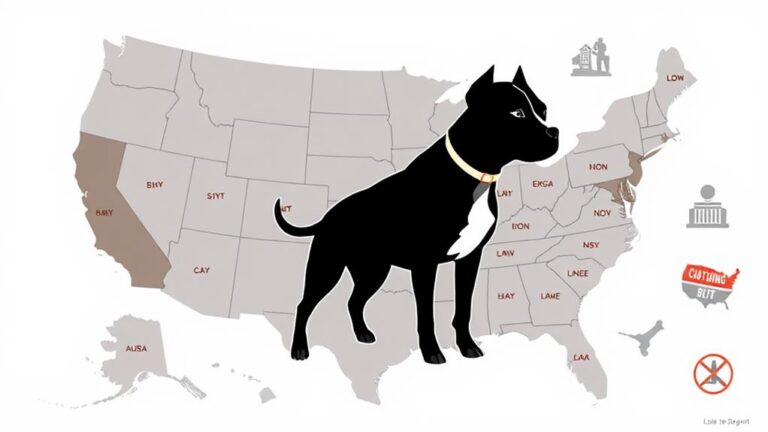Dog smegma is usually a cream-yellow color. It’s normal for male dogs and helps keep things lubricated. But, you should watch for changes. If there’s a lot more smegma or it starts to smell bad, that could be a sign of a problem. Younger dogs might have more smegma, so don’t worry too much.
Regular cleaning can help keep everything tidy and prevent problems later on. If the color changes or you notice swelling, check with your vet. There’s a lot to learn about keeping your dog healthy!
Understanding Dog Discharge Colors
When you see discharge coming from your dog, it’s important to pay attention to what color it is. Discharge can be green, yellow, or white.
Each color can mean something different. For example, a green discharge might suggest an infection. Yellow or white discharge can also indicate trouble.
You should also look for other signs, like sudden changes in your dog’s behavior. Is your dog acting sad, tired, or in pain? These can be important clues.
If the discharge looks thick or cloudy, it may contain pus. This often happens if your dog has cuts or wounds.
An infection can develop from those injuries. If you notice this kind of discharge, don’t ignore it! It could be a sign that your dog needs help.
Any discharge that lasts for more than a couple of days should be checked by a veterinarian. It’s always better to be safe than sorry when it comes to your pet’s health.
Keep a close eye on your dog and trust your instincts. You know your furry friend better than anyone else. If something feels off or different, it’s best to get it checked out by a vet.
Your dog relies on you to notice these things. Staying alert can help keep your canine companion healthy and happy!
Characteristics of Male Dog Smegma
Male dog smegma is a cream-yellow substance that can sometimes surprise dog owners. It’s a natural lubricant that you might notice dripping from your dog, especially when he’s just sitting or lying down.
This discharge is normal and isn’t usually a cause for worry. However, it’s important to know that it can be linked to some issues, like infections or discomfort.
Pay attention to any signs that your dog might be in distress, such as licking his genitals more than usual or showing signs of pain.
Younger dogs tend to have more noticeable smegma, but it can happen at any age. While it may seem like a small issue, watching for changes is essential. If you notice that the smegma becomes excessive, it could indicate an infection, and you should consult your vet right away.
To keep your dog clean and healthy, regular cleaning is a good idea. Use a gentle cloth to wipe the area, being careful not to irritate the skin. Keeping the area clean can help prevent problems and maintain good hygiene.
Overall, being aware of male dog smegma and understanding its characteristics helps you take better care of your furry friend. Just keep an eye on things, and you’ll help ensure he stays healthy and happy!
Common Causes of Smegma Changes
Smegma changes in dogs can happen more often than you might think. These changes can be a sign of different health issues.
For example, if you see a change in color or the amount of smegma, it might mean your dog has a condition like balanitis or balanoposthitis.
These terms refer to inflammation of the glans penis or the skin covering it. Sometimes, the problem is minor and can clear up on its own.
It’s important to keep an eye on your dog’s health. Changes in discharge might mean something is wrong, especially if you notice signs of pain or discomfort.
Dogs may show they are in pain in different ways, like whining, not wanting to move, or even being grumpy. If you notice your dog having excessive discharge, pay close attention.
Keeping your dog’s genital area clean can help prevent these issues from happening. Regular grooming and baths can help remove dirt and reduce irritation.
If the changes in smegma don’t go away or seem serious, it’s a good idea to talk to your vet. They can help figure out what is going on and suggest the best way to help your furry friend feel better. Remember, your dog’s health is important, and it’s always best to be cautious!
Importance of Cleaning Smegma
Keeping your dog’s genital area clean is very important. If you don’t clean it regularly, smegma can build up. This buildup can cause irritation and even infections. Regular cleaning helps to prevent these problems and keeps your dog comfortable.
When you clean your dog, you’re not just helping their private areas. Good hygiene can also protect your dog’s overall health.
Dirty areas can lead to more serious issues like gum disease and tooth decay. If you notice any discoloration or bad odors, it’s a sign that cleaning is needed. Remember, cleanliness is not just about how things look; it’s about your dog’s health, too!
A clean genital area means fewer places for bacteria to grow. To clean, use gentle methods. One option is to mix vinegar and baking soda.
These ingredients can help remove dirt without causing irritation to your dog’s skin. Be gentle and patient during the cleaning process. Your dog may not always enjoy it, but they will feel better afterward.
Making this part of your grooming routine is a great idea. It shows that you care about your dog’s health and happiness. Plus, it gives you peace of mind knowing you’re doing your best for your furry friend.
So, don’t skip cleaning; it’s an essential part of keeping your dog healthy and happy!
Impact of Neutering on Smegma
Neutering your dog can really help reduce smegma. Smegma is a buildup of secretions often found around a male dog’s private area. After getting neutered, you will probably notice less of it over time.
This happens because neutering lowers testosterone levels in your dog. Testosterone is the hormone that causes the body to produce more smegma.
Lower testosterone not only means less smegma but can also help improve your dog’s behavior. When dogs have lower testosterone, their strong mating instincts can reduce. This can lead to fewer unwanted behaviors, like marking their territory or roaming away.
Neutering can also boost your dog’s overall health. With less smegma, your dog will be cleaner and more comfortable. You will not have to worry as much about messes or hygiene issues. It’s also important to continue regular vet check-ups to keep your dog healthy, but neutering often results in a happier pet.
If you are thinking about neutering your dog, it’s a good idea to talk to your vet. They can help you decide the best time and explain the process. Neutering is an important step that can make a big difference in your dog’s life, especially when it comes to managing smegma.
When to Consult a Veterinarian
If you notice any strange changes in your dog’s discharge, pay close attention. Discharge that is green or yellow or has a strange smell can be a sign of trouble. These colors may indicate the presence of pus, which could mean there’s an infection.
If your dog is acting uncomfortable or shows signs of pain, like shaking or whining, it’s important to talk to a veterinarian as soon as possible. Recognizing these signs is crucial for getting your dog the care he needs.
Also, if your dog is licking his private area more than usual, that could be another warning sign. He might have swelling or irritation.
Although regular cleaning is helpful, any visible swelling or redness should be checked out by a vet quickly. It’s always better to be cautious when it comes to your pet’s health.
Conclusion
Watching your dog’s smegma color is really important for their health. If you see any strange colors like green or yellow, don’t wait! Talk to your vet. Cleaning regularly helps stop build-up and keeps your dog comfortable. Neutering can also change how much smegma your dog has. Stay informed and take action to keep your furry friend happy and healthy!



